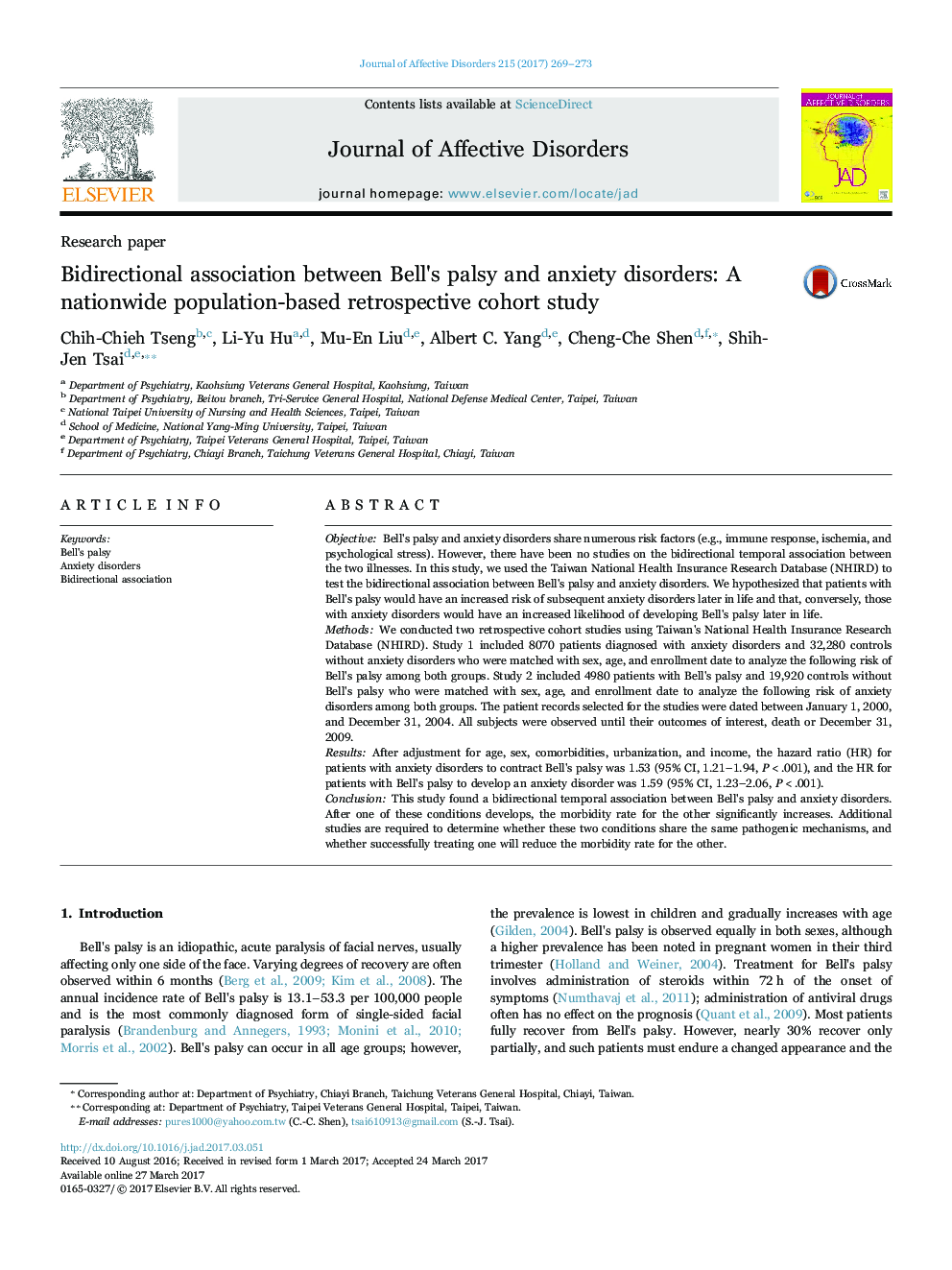| کد مقاله | کد نشریه | سال انتشار | مقاله انگلیسی | نسخه تمام متن |
|---|---|---|---|---|
| 5722355 | 1608110 | 2017 | 5 صفحه PDF | دانلود رایگان |
- Bell's palsy and anxiety disorders share numerous risk factors.
- National Health Insurance Research Database in Taiwan was used in this study.
- The result showed a bidirectional temporal association between Bell's palsy and anxiety disorders.
- Psychological evaluations and emotional care for patients with Bell's palsy are important.
ObjectiveBell's palsy and anxiety disorders share numerous risk factors (e.g., immune response, ischemia, and psychological stress). However, there have been no studies on the bidirectional temporal association between the two illnesses. In this study, we used the Taiwan National Health Insurance Research Database (NHIRD) to test the bidirectional association between Bell's palsy and anxiety disorders. We hypothesized that patients with Bell's palsy would have an increased risk of subsequent anxiety disorders later in life and that, conversely, those with anxiety disorders would have an increased likelihood of developing Bell's palsy later in life.MethodsWe conducted two retrospective cohort studies using Taiwan's National Health Insurance Research Database (NHIRD). Study 1 included 8070 patients diagnosed with anxiety disorders and 32,280 controls without anxiety disorders who were matched with sex, age, and enrollment date to analyze the following risk of Bell's palsy among both groups. Study 2 included 4980 patients with Bell's palsy and 19,920 controls without Bell's palsy who were matched with sex, age, and enrollment date to analyze the following risk of anxiety disorders among both groups. The patient records selected for the studies were dated between January 1, 2000, and December 31, 2004. All subjects were observed until their outcomes of interest, death or December 31, 2009.ResultsAfter adjustment for age, sex, comorbidities, urbanization, and income, the hazard ratio (HR) for patients with anxiety disorders to contract Bell's palsy was 1.53 (95% CI, 1.21-1.94, P<.001), and the HR for patients with Bell's palsy to develop an anxiety disorder was 1.59 (95% CI, 1.23-2.06, P<.001).ConclusionThis study found a bidirectional temporal association between Bell's palsy and anxiety disorders. After one of these conditions develops, the morbidity rate for the other significantly increases. Additional studies are required to determine whether these two conditions share the same pathogenic mechanisms, and whether successfully treating one will reduce the morbidity rate for the other.
Journal: Journal of Affective Disorders - Volume 215, June 2017, Pages 269-273
